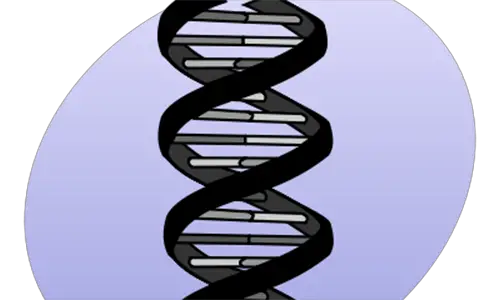We must have come across the word “Genetics” but never actually thought to know more about it in detail. In layman’s language, the defination of “Genetics” would be a branch of Biology which studies the differences and similarities between organisms or related organism families. In other terms, it’s the study of a human body in relate to his hereditary factors, inherent behaviour, variations and other properties resulting from his interaction with the environment. It can also extend to a group of humans being observed on their inherited phenomenas or divergences. The other interesting facts about ‘Genetics’ would be:
1. The field is also linked with many other branches of Life Sciences and Information Systems.
2. The word genetics originates from Ancient Greek word “genetikos” meaning generative, which further arise from the word “genesis”, meaning origin.
3. Gregor Mendel, the father of Genetics, was a 19th century scientist. He was the one to discover that human traits are carried from parents to offsprings, and termed it as ‘trait inheritance’.
4. Humans share 98% of genetic similarity with chimpanzees and 90% with mice.
5. On an average, 1 out of 180 children is born with a chromosomal mutation, resulting in Down’s syndrome.
6. “Yoruba”, the tribal group of Africa has an bizarre high birth rate of twins, thus becoming a fascinating study group for heritability research.
7. According to research, Sans are the oldest inhabitants of the world, termed as genetic “Adam” group.
8. 75% of pediatric admissions in hospitals every year is due to genetic reasons.
9. Worldwide only 3% of the DNA codes for genes, the rest approximately 80% of the DNA is of no use due to its unknown function, often termed as “non coding DNA”.
10. The total variety of cells in our body is more than 200 types. Some of the examples are nerve cells, muscle cells and liver cells.
11. DNA contains four chemicals named adenine(A), cytosine (C), guanine (G), and thymine (T). However, the interesting bit is the coding –decoding of these letters in defining human body characteristics. For example the gene for green eyes will have a nucleotide sequence of AAACCGGTTTTT.
12. The first human body genome was decoded in 2003, and got officially published in 2007.
13. The genome of Polychaos dubium contains DNA approximately 200 times more than the amount of DNA found in the human genome.
14. Genome also contains parasitic DNA which emerges from virus and replicates itself thousands times over generations, though actually serving no purpose. One famous example of such virus is HIV.
15. Generally a human genome is said to be made of 3,200 million base pairs, further divided into 46 chromosomes.
Why is Genetics important:
Genetic studies can be helpful in preventing various kind of diseases, besides simultaneously providing you with preventive measures and cure. Genes are basically instructions for your body to know how to build protein for your survival and growth and if scientists crack this code, they will eventually be in a condition to keep you healthy and also discover medicines for all your ailments.
Why is Genes important for children:
Have you ever heard people saying, “it’s in your genes”. This means that we tend to get traits from our parents because we share their genes. And what are genes? As discussed above, genes are made up of a substance called deoxyribonucleic acid, simply known as DNA, enveloped together to form structures called chromosomes. This further is made up of A,C,G,T patterns as briefed above, for giving instructions to your body for performing. In the same unending process, cells keep on duplicating, passing genetic information to new cells.











Leave a Reply